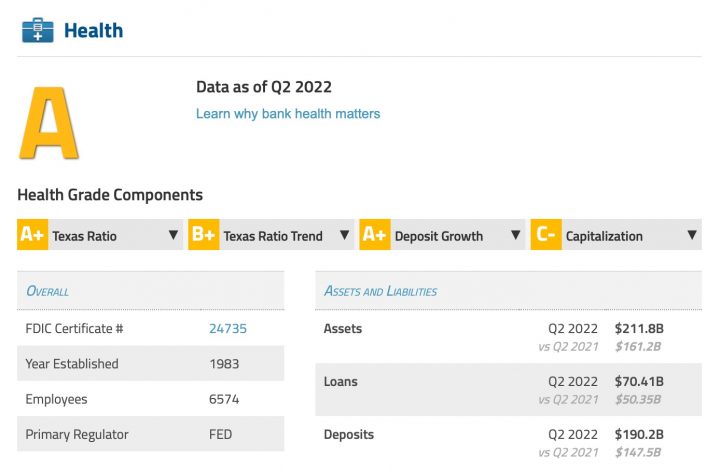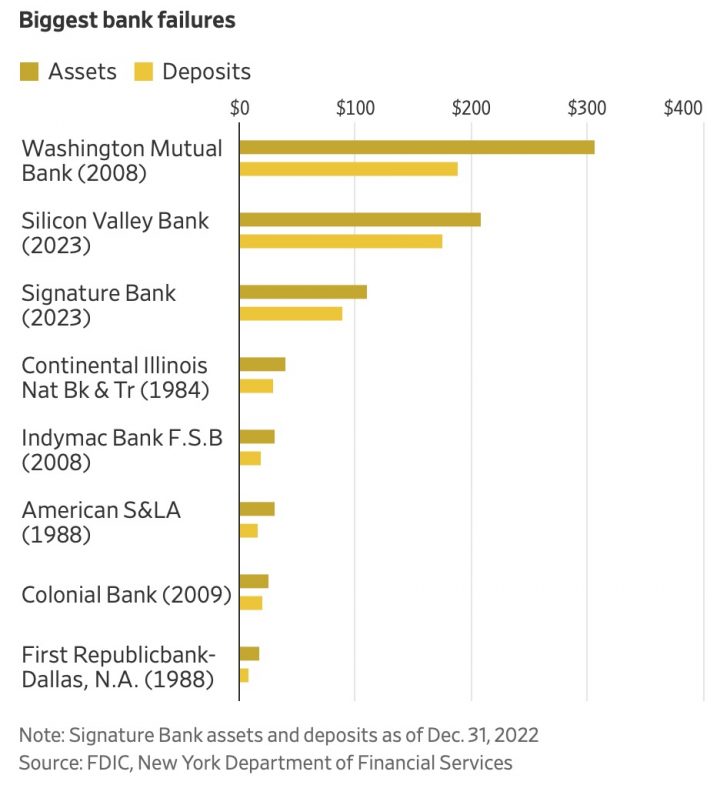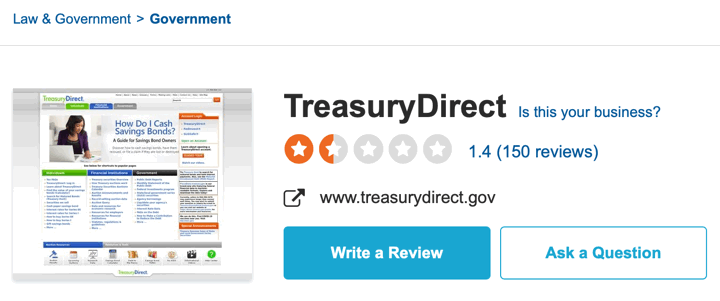The big financial news over the weekend was the failure of both Silicon Valley Bank and Signature Bank. They failed, the FDIC took over and fulfilled its duties, and then the uninsured business owners convinced the Fed to backstop everything (aka “bail them out”).
As a simple individual investor trying to keep his family assets safe, my first takeaway was simply that you can’t expect to see a bank failure coming. Silicon Valley Bank was the cool kid for a long time. Here’s a chart from Avios of its stock price vs. an index tracking bank stocks overall:
Most of Silicon Valley Bank’s deposits were from start-up businesses, but individual households had accounts with them as well. I don’t mean to pick on DepositAccounts, but they are a respected site and they gave Silicon Valley Bank a Health Grade of A:

This is why I don’t care about health grades for banks from anyone. As a depositor, either they have FDIC insurance, or they don’t. Big name banks can fail even if their assets are greater than their deposits. Silicon Valley Bank and Signature Bank are now the second and third largest bank failures ever (even inflation-adjusted), and only behind to Washington Mutual during the financial crisis. From WSJ:

I wonder how the list will look in a year?
As an individual, there is no reason to exceed the FDIC insurance limits.. FDIC insurance provides great peace of mind. Don’t waste it.
Got anywhere close to $250,000 in a single bank account? Know that the FDIC insurance coverage limit applies per depositor, per insured depository institution for each account ownership category. You may actually achieve more than $250,000 of total coverage at a single bank, depending on how you have titled your accounts. Here are the official online calculators:
NCUA Electronic Share Insurance Calculator (ESIC)
FDIC Electronic Deposit Insurance Estimator (EDIE)










